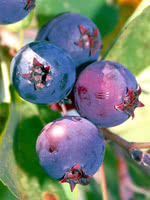Mon-Fri 9am - 5pm Mountain time
Black Elderberry vs Autumn Brilliance Saskatoon (Serviceberry)
Sambucus canadensis
Amelanchier x grandiflora Autumn Brilliance
NOT AVAILABLE THIS SEASON - MIGHT RETURN
NOT AVAILABLE THIS SEASON - MIGHT RETURN
Black Elderberry is a deciduous shrub native to eastern North America. You can plant this shrub in moist areas and it will help stabilize your soil. You can also use it on rural properties anywhere you'd use a lilac.
Black Elderberries are considered to be partially self-pollinating. So while they will still produce some berries without cross-pollination, planting with another variety will increase yields. Consider planting with Ranch Elderberry or Bob Gordon Elderberry.
Warning: the seeds, stems, leaves, roots, and uncooked berries of the Black Elderberry are poisonous to humans when eaten in quantity. You should cook the berries to make them safe for human consumption.
Prized for its brilliant orange-red fall color and disease resistance, this exceptionally bright tree is an excellent focal point for your garden. In the spring, clusters of fragrant white flowers give way to edible purplish black fruit that is heavenly in jams, jellies and pies. Use this Saskatoon in shrub borders or as a small tree.
Black Elderberry Quick Facts
Autumn Brilliance Saskatoon (Serviceberry) Quick Facts
Toxicity: leaves, stems, and uncooked berries are poisonous to humans

